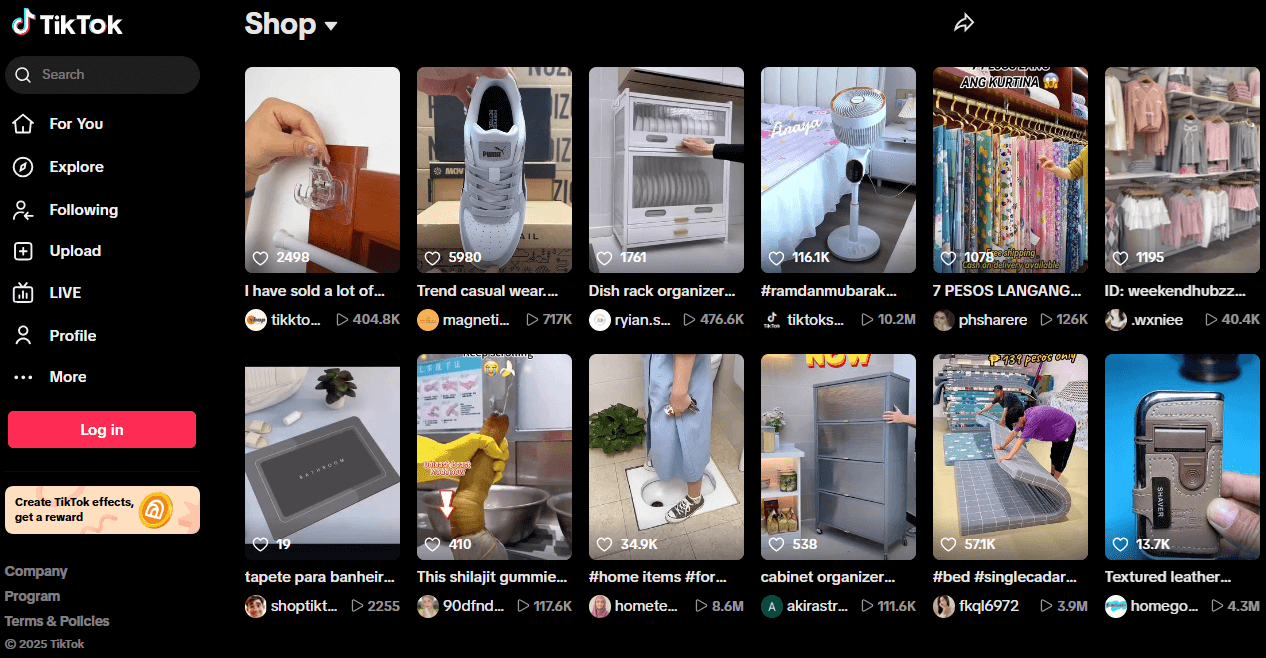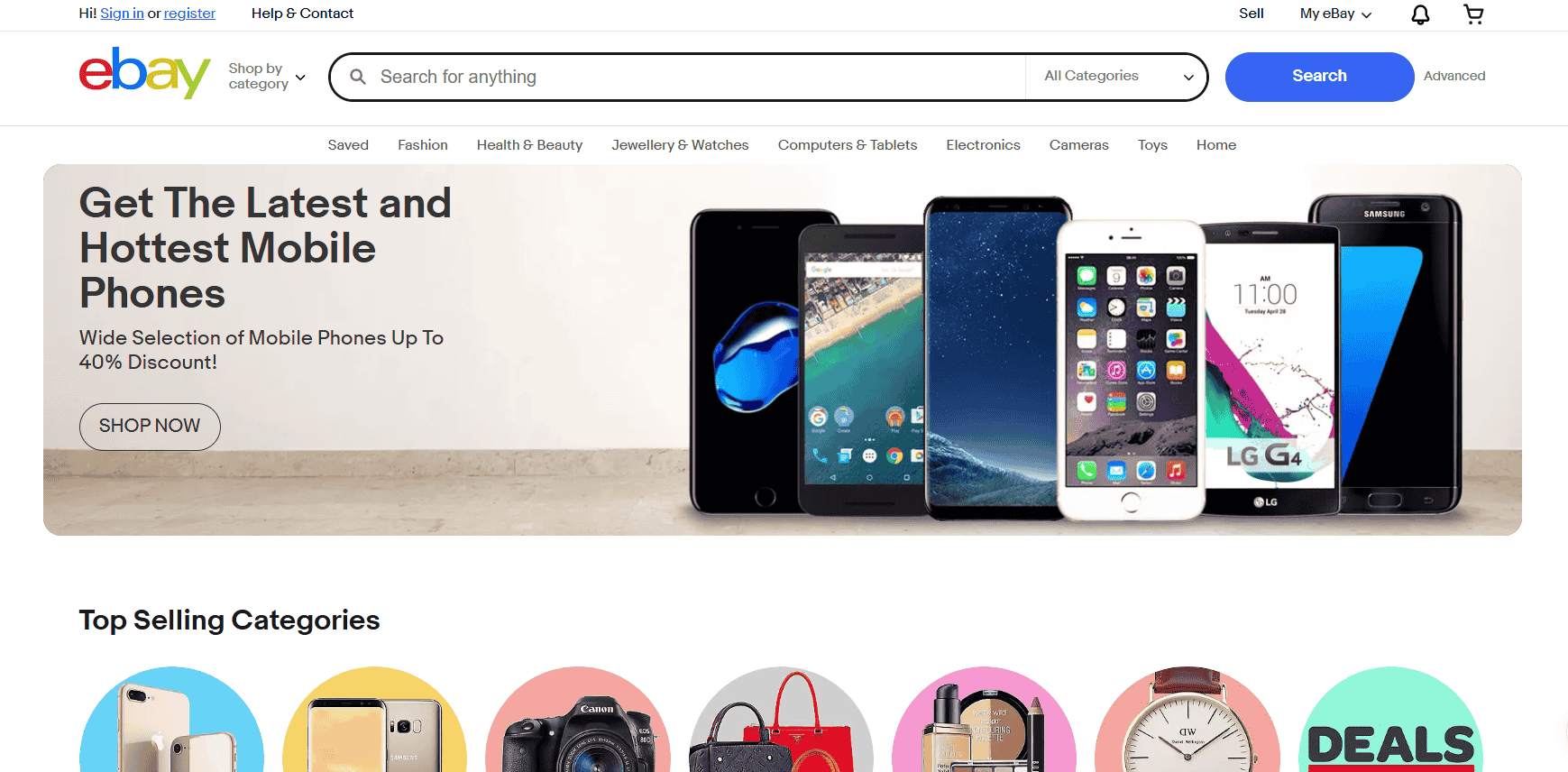Publishing videos. Writing blogs. Growing a following. You might already be doing all that. You’re putting in the time, creating content that entertains or educates, and maybe even building a loyal audience.
But while you’re helping others make decisions, are you actually earning from it? That’s where affiliate marketing comes in.
Affiliate marketing is a method of earning income by promoting products or services and getting paid a commission for each sale, lead, or action generated through your unique link. It continues to thrive in 2025 because of one thing: it works.
Brands are pouring more money into affiliate programs because they see the value in trusted voices driving real results.
Whether you’re reviewing tech gadgets on YouTube, showing off skincare routines on TikTok, or recommending business tools in your blog, affiliate marketing turns your content into income.
-
Affiliate marketing lets you earn commissions by promoting products through unique links on platforms like TikTok, YouTube, blogs, and email.
-
You can start affiliate marketing with no money by using free programs like Amazon Associates and creating organic content that solves real problems.
-
Choosing the right niche and affiliate platform is essential to building trust, staying consistent, and driving long-term passive income.
-
Tools like Ubersuggest, Pretty Links, and Canva Pro help you find keywords, manage links, and design content that boosts clicks and conversions.
-
You don’t need a large following to succeed: trust, relevance, and consistency are what turn content into steady affiliate income.
You’re not pushing random products. You’re recommending things that fit your niche and benefit your audience.
I’ve worked with clients who started affiliate marketing with zero budget. Some were online sellers who reviewed suppliers, while others created tutorial content about the tools they personally used to grow their businesses.
The common thread? They were consistent, honest, and intentional about what they promoted. That’s when the commissions started adding up.
If you’ve been wondering whether affiliate marketing is worth your attention this year, the answer is yes, and this guide will walk you through how to get started, how to earn, and how to scale it into a reliable income stream.
What Is Affiliate Marketing and How Does It Work?
Affiliate marketing works like digital referral marketing. A company gives you a unique tracking link. You promote their product. Every time someone buys through that link, you earn a piece of the pie.
That commission might be a percentage of the sale, like 4% to 10% on Amazon, or a flat payout, depending on the product and program. Either way, the structure rewards you for doing what you’re probably already good at: creating content and influencing decisions.
Here’s what typically happens:
- You apply to join an affiliate program.
- You get a trackable affiliate link.
- You embed that link in your content, whether it’s a TikTok video, blog post, or email newsletter.
- Someone clicks your link and makes a purchase.
- You earn a commission.
This system makes sense for everyone involved. The company gains a sale without spending on traditional ads. The customer gets a product recommendation they trust. And you earn money by simply connecting the two.
I’ve seen this play out with a client who runs a niche YouTube channel about home organization. She reviewed drawer dividers from Amazon and included her affiliate links in the video description.
That single video brought her over $300 in passive income within a few weeks, not because she was pushing products hard, but because she offered something useful that her audience needed.
Affiliate marketing works across multiple platforms: blogs, YouTube channels, podcasts, social media pages—you name it. Statista reports that affiliate marketing spending in the U.S. is on track to hit $13 billion by the end of 2025.
That isn’t just a trend. It’s a sign that more brands are actively investing in partnerships with creators, influencers, and even everyday people who know how to connect with an audience.
Whether you’re a beginner or an experienced content creator, affiliate marketing gives you a clear, scalable way to earn money for the influence you already have.
Top Affiliate Marketing Platforms to Join in 2025
Choosing the right affiliate marketing platform can make or break your success, especially in the beginning. Each platform has its own quirks, payment structure, and product focus, so it’s worth taking the time to understand where your content fits best.
The good news is, whether you’re a blogger, a TikTok creator, or someone growing an email list, there’s a solid platform out there for you.
Amazon Affiliate Marketing (Amazon Associates)
Amazon Associates remains one of the easiest entry points for beginners. With millions of products across every category imaginable, you’ll never run out of items to promote. Whether you’re reviewing books, electronics, kitchen gadgets, or dog toys, you can bet Amazon sells them.
Commission rates range up to 10%, depending on the category, and while the 24-hour cookie window is short, the sheer volume of buyers on Amazon keeps conversions steady.
One of my clients built a niche blog around RV life and road trips. By linking to camping gear and vehicle accessories on Amazon, she turned casual blog readers into consistent buyers, and those small commissions added up to hundreds each month.
TikTok Affiliate Marketing
TikTok affiliate marketing is booming, thanks to features like TikTok Shop and the Creator Marketplace. Creators can tag physical products directly in their videos, making it ridiculously easy for viewers to buy with a tap.
The platform favors engaging, authentic content, so even micro-influencers have a chance to earn. It’s especially powerful for trending products, product reviews, and “TikTok made me buy it” moments.
I’ve worked with an online seller who tapped into TikTok affiliate marketing by reviewing beauty tools. She didn’t have a massive following, under 10k, but her tutorial-style videos were relatable.
In a matter of weeks, her affiliate links through TikTok Shop began pulling in commissions, sometimes even outpacing the sales on her own ecommerce store.

ClickBank
ClickBank is a go-to platform for digital products like online courses, software, health supplements, and info-based ebooks. It’s ideal for affiliates who want high payouts, with some commission rates going as high as 75%.
You can also filter products by gravity score, a metric that tells you how well something is converting for other affiliates, making it easier to promote items that actually sell.
ClickBank is especially valuable if your content focuses on personal development, online business, or wellness. You’re promoting solutions people are actively searching for, which makes your recommendations feel timely and relevant.
CJ Affiliate, ShareASale, Rakuten, Impact, and Digistore24
These platforms are a bit more advanced but worth exploring once you’ve found your niche. They give you access to major brands as well as hidden gems in niche industries. You can partner with companies in fashion, software, education, finance, home improvement—you name it.
I’ve had clients who used CJ Affiliate to partner with travel booking websites and hotel chains, earning commission through blog articles that recommended travel packages.
Some of these platforms also offer better reporting tools, longer cookie windows, and premium support for top performers. The variety is what makes them powerful. Instead of limiting yourself to one brand, you can test and diversify your income sources.
By signing up with one or more of these affiliate marketing platforms, you give yourself room to experiment, grow, and figure out what works for your audience. Start with one that aligns with your content and goals, then branch out once you’re seeing traction.
How Do I Begin Affiliate Marketing?
Getting started can be simple, even if you’re starting from scratch. What matters most in the beginning is making smart, intentional choices that set you up for long-term success. You don’t need a big budget or fancy gear. You just need to be consistent, clear, and strategic about your next steps.
Step 1: Pick Your Niche
Choosing the right niche is crucial. Go for a topic that you genuinely care about and that also attracts buyers. The best niches balance your personal interest with profitability. Think fitness, fashion, tech, parenting, or personal finance.
For example, tech enthusiasts can earn commissions by reviewing microphones or camera gear, while fitness creators can recommend supplements, gear, or workout plans.
You’ll create better content when you enjoy the subject, and that authenticity helps build trust, something affiliate marketing thrives on.
Step 2: Choose an Affiliate Program
Once you’ve settled on a niche, the next move is to find affiliate programs that match. Amazon Associates and ClickBank are beginner-friendly options with huge product libraries. You can also find niche-specific offers through platforms like ShareASale, Impact, and CJ Affiliate.
These programs connect you to both major brands and smaller businesses looking for reliable promoters. Take time to read the commission structure, cookie duration, and payout methods before committing.
Step 3: Build a Platform
Affiliate marketing needs visibility, and your platform is how people find your recommendations. Whether it’s a blog, TikTok, YouTube channel, Instagram page, or a growing email list, focus on the one you enjoy using most.
A blog gives you long-term SEO traffic, while TikTok and YouTube can generate fast engagement. The key is to deliver value—help people solve a problem, answer a question, or find a product they’ll love—and weave in your affiliate links naturally.
Step 4: Create and Publish Content
Content is where the real work happens. This is where you prove to your audience that you know what you’re talking about. You can create tutorials, unboxings, honest reviews, comparison guides, or how-to content that naturally features the product you’re promoting.
Use real experiences, stats, and visuals to back up your claims. Show the product in action, explain who it’s for, and be upfront about both the pros and the cons. People can smell hype from a mile away, so be real.
Step 5: Track and Optimize
Once your links are live and getting clicks, it’s time to track performance. Use tools like Pretty Links to organize and shorten your affiliate URLs, and Google Analytics to monitor traffic behavior. Watch which pieces of content are converting and which ones aren’t.
Maybe your YouTube tutorial brings in sales, but your blog review flops. That’s valuable data. Use it to fine-tune your headlines, images, and calls-to-action so that each new piece of content performs better than the last.
One of my past clients, a Shopify store owner, decided to branch into affiliate marketing by reviewing different print-on-demand platforms on YouTube. She recorded simple videos walking through the pros and cons of sites like Printful and Gelato, linking her recommendations in the video description.
Within three months, her affiliate links to design tools and t-shirt suppliers were pulling in an extra $800 a month, and that was before she even hit 5,000 subscribers. Her strategy? Clarity, consistency, and real-life usefulness. No hype, just honest reviews that helped her audience make smarter choices.
That’s how affiliate marketing starts. It’s not about overnight success. It’s about building a system that works quietly in the background, bringing in commissions while you focus on growing your reach.
How to Start Affiliate Marketing With No Money
You don’t need to spend a dime to get started. That’s one of the biggest reasons affiliate marketing appeals to new content creators and side hustlers. There are no inventory costs, no product development headaches, and no need to run paid ads when you’re just getting your feet wet.
Start with the platforms you already use every day. TikTok and YouTube Shorts are powerful tools for affiliate marketers who know how to grab attention fast.
Posting short product reviews, unboxings, or tutorial-style videos can lead viewers directly to your affiliate links. You don’t need fancy editing, just a clear demo, a helpful tip, and an authentic recommendation.
Medium is another great platform if you enjoy writing. You can publish how-to guides, comparison articles, or quick product roundups that rank well in Google searches.
These kinds of posts are goldmines for evergreen affiliate income, especially when you write for popular niches like productivity, personal finance, or skincare.
Quora and Reddit may seem unconventional, but they’re gold for affiliate marketers who know how to answer questions well. Let’s say someone on Quora is asking about the best wireless earphones under $50.

That’s your opportunity to respond with a well-thought-out answer and a relevant affiliate link. On Reddit, some niche communities even allow you to share affiliate links if you’re upfront about it and contributing real value.
Facebook Reels also offer a simple way to get your content seen. A quick review of a trending Amazon product can go far, especially in shopping-heavy groups or niche pages.
I’ve seen creators with zero ad budget gain hundreds of views using reels alone, just by jumping on seasonal trends or sharing everyday product finds.
You can also join free affiliate programs to kick things off.
- Amazon Associates is open to beginners and gives access to nearly every type of product you can think of.
- ClickBank is perfect for high-commission digital products.
- TikTok Creator Marketplace connects you directly with brands looking to pay influencers.
- Impact Radius lets you apply to a wide range of brands, from software tools to fashion companies.
The real trick is using organic traffic to drive clicks. That means learning to optimize your content—using keywords people are searching for, answering real questions, and staying active on platforms where your audience already hangs out.
One of my previous clients sold handmade beauty products and had been struggling with slow sales. She started reviewing her competitors’ popular items on TikTok using affiliate links and giving honest, side-by-side comparisons.
She didn’t run any ads, didn’t have a big budget, and wasn’t pushing her own product. Her approach was transparent, helpful, and consistent. Within a few weeks, she earned her first commissions and even gained a bigger following than when she promoted only her brand.
Affiliate marketing with no money is more than possible. It’s smart. All you need is time, creativity, and the willingness to show up with content that actually helps someone make a decision. That alone can get you further than any paid campaign when you’re starting out.
How Can I Earn in Affiliate Marketing?
Your earnings depend on your niche, your traffic, and your content strategy. Some niches pay higher commissions than others. Tech, software, finance, and health tend to offer better rates than lower-margin categories like books or household items.
But even in low-commission niches, volume and trust can still turn content into a steady stream of income.
Here’s how you can make money:
Cost-per-sale (CPS)
You earn a fixed amount or a percentage of each product sold through your affiliate link. This is the most common model. For example, promoting a $200 webcam on Amazon with a 5% commission gives you $10 per sale. Get a few sales a day and it adds up.
Recurring income
You promote tools or services that require monthly subscriptions, like Canva Pro, web hosting plans, or email marketing platforms. As long as the customer keeps paying, you keep earning. That recurring model is powerful for building long-term income, especially when promoting SaaS products.
Pay-per-lead (CPL)
Some programs will pay you simply for generating leads—sign-ups, free trials, or inquiries, even if no purchase happens right away. That works well in industries like insurance, finance, or online education where the lifetime customer value is high.
The key is to position your content to solve real problems. Product reviews are a great example. You’re not just listing features. You’re helping someone decide what to buy.
If you’re reviewing microphones for content creators, show the difference in sound quality, talk about compatibility, and include a quick demo.
Use the product in your own video so people can see it in action. Then link directly to that microphone using your affiliate link. Specificity builds trust, and trust leads to conversions.
Content that anticipates your audience’s needs will always outperform generic promotion. One of my clients created a comparison guide for three different online course platforms.
She broke down pricing, ease of use, integrations, and which one she personally preferred. That blog post became one of her top traffic sources and still brings in commissions every month, without any ad spend.
According to a study by Affise, 81% of brands rely on affiliate marketing to reach new audiences, and 79% of marketers use affiliate programs to engage existing customers. That tells you exactly how vital affiliate partners have become in the digital economy.
Brands are willing to reward creators and influencers who know how to guide people toward a smart buying decision. You’re not being hired to sell. You’re being paid to help.
Affiliate Marketing vs. Dropshipping
While both are low-cost entry points to ecommerce, they work differently and attract different types of sellers. The key difference lies in how much responsibility you’re willing to take on and how you want to earn.
Feature Affiliate Marketing Dropshipping
Inventory None Seller handles fulfillment via suppliers
Customer Service Not your job Your responsibility
Platform Social/blog/email Shopify, WooCommerce, etc.
Profit Commission-based Higher control of markup
In affiliate marketing, your focus is purely on content creation, building trust, and driving conversions. You’re essentially the connector between the buyer and the seller.
There’s no inventory to manage, no shipping headaches to sort out, and no angry customers messaging you about delayed orders. That’s a huge relief, especially when you’re just starting out or juggling multiple projects.
One of the biggest benefits is being able to earn without ever touching the product. You don’t have to worry whether a warehouse in China fulfills on time, or whether your supplier suddenly runs out of stock. Your main task is to recommend products that align with your niche and audience.
It’s a setup that makes affiliate marketing ideal for creators, educators, and bloggers who want to monetize their content without dealing with the backend chaos of ecommerce operations.
Dropshipping, on the other hand, gives you more control over pricing and branding. You build an online store using platforms like Shopify or WooCommerce, list products from a third-party supplier, and keep the profit margin between your selling price and the supplier’s price.
That can sound appealing, especially since you don’t have to buy products upfront. But it comes with its own set of issues: customer complaints, longer delivery times, and strict platform policies on returns and refunds.
Some of my clients learned this the hard way. They started dropshipping because they liked the idea of building a brand from scratch. But once sales started coming in, so did the problems: tracking issues, product quality complaints, and countless hours spent handling support tickets.
Several of them eventually pivoted to affiliate marketing, where they could continue recommending products they believed in, without dealing with fulfillment stress or customer disputes.
Both models can be profitable. It all depends on your skill set, patience, and what kind of business you want to run. If you prefer building content and focusing on trust, affiliate marketing is often the smoother, more scalable path, especially in the long run.

Best Affiliate Marketing Tools in 2025
The right tools can take your affiliate marketing efforts from casual to consistent. You don’t need to use everything at once, but having the essentials in place will help you stay organized, optimize faster, and grow with purpose.
Ubersuggest or Ahrefs
These are great for keyword research. You can uncover what your audience is actually searching for, how competitive a keyword is, and which content topics are worth your time.
They also help you analyze your competitors and find content gaps you can fill. I’ve used Ubersuggest with clients who run niche blogs, and we’ve seen massive improvements in ranking simply by choosing keywords with better potential.
Pretty Links or ThirstyAffiliates
These tools help you manage and cloak your affiliate links. Instead of sharing a long, messy URL full of tracking codes, you can create clean, branded links that are easier to remember and look more trustworthy.
This also lets you see which links are getting clicks, which content is converting, and where you’re losing momentum.
WordPress or Webflow
These tools give you the foundation to create a content hub you own. A blog or website builds long-term visibility through SEO, gives you control over design and messaging, and creates a central place to send your audience.
Even a basic landing page with your affiliate recommendations can boost your conversion rates when done right.
MailerLite or ConvertKit
These are ideal for building and nurturing an email list. With these tools, you can segment subscribers by interest, automate follow-ups, and share personalized recommendations.
Email is still one of the highest-converting channels for affiliate marketing, especially when you build trust over time.
Canva Pro
This one helps you create scroll-stopping visuals for social media, blog banners, email graphics, and thumbnails. Good design makes your content stand out, and Canva makes it easy, even if you’ve never used design software before.
Many of my clients use it daily to create branded templates that speed up content production and keep everything looking polished.
These tools help you scale and track your affiliate campaigns without guessing. Data matters. When you know what’s working—what keywords bring traffic, which links get clicks, and what visuals increase engagement—you can double down on the things that drive actual revenue.
That’s how you move from casual content creation to a system that supports real, consistent earnings.
Examples of Successful Affiliate Marketing
Affiliate marketing works best when content meets intent, when what you’re sharing genuinely helps people make smarter choices.
These three real-world cases show how everyday creators, not celebrities or influencers with huge budgets, are building real income from affiliate links by focusing on what their audience actually needs.
YouTuber Example
A tech reviewer with fewer than 10,000 subscribers makes around $3,000 per month just by including affiliate links in their video descriptions.
They review laptops, webcams, microphones, and screen-recording software, things people often search for before making a purchase. Their channel focuses on practical comparisons and real-life demos.
Because the videos solve specific problems, like “best microphone for Zoom calls” or “budget-friendly video editing tools,” the audience clicks and buys. It’s not about flashy production; it’s about helping someone pick the right gear.
TikTok Creator
A home decor enthusiast shares budget-friendly room makeovers using products from TikTok Shop. By linking each product directly in her videos, she earns through the affiliate feature built into the platform. Her content feels personal and relatable, nothing overproduced.
She talks about how the lighting looks in natural daylight or how long a product took to arrive. That kind of detail builds credibility. Many of her followers return to her page for recommendations, turning casual views into consistent sales.
Blogger
A personal finance blogger once published a single, deeply researched blog post comparing popular budgeting apps like YNAB, Mint, and EveryDollar. That post now brings in anywhere from $500 to $1,200 every month through affiliate commissions.
The success comes from how well the post ranks on Google and how clearly it breaks down pros, cons, features, and pricing. People looking to get serious about managing their money find it helpful and trustworthy, two qualities that drive conversions better than aggressive sales tactics.
You don’t need millions of followers. What you do need is trust, relevance, and consistency. People are more likely to click your affiliate links when your content feels useful, honest, and specific to their needs.
Whether you’re creating short videos, writing long-form blog posts, or just sharing helpful tips in your email newsletter, your voice, paired with the right products, can turn everyday content into a reliable income stream.
Frequently Asked Questions
Starting something new often comes with a lot of questions, and affiliate marketing is no different. Whether you’re still deciding if it’s worth your time or you’re already mapping out your first campaign, getting the facts straight makes all the difference.
Below are some of the most common questions people ask about affiliate marketing, along with straightforward answers based on real experience and what actually works in 2025.
How much can I earn from affiliate marketing?
Commissions vary widely based on your niche, the products you promote, and how much traffic you’re driving. Many affiliates earn between $500 to $5,000 per month once they find a rhythm.
Some go beyond that. Super affiliates can make six figures per year. These are usually people who’ve built a strong content system, have multiple traffic sources, or focus on high-ticket and recurring commission products.
I’ve worked with one creator who makes $1,200/month just from a handful of blog posts about software tools. No ads, no store, just solid content paired with helpful links.
Is affiliate marketing legit or a scam?
It’s absolutely legit. Major brands like Amazon, Walmart, Canva, Shopify, and Bluehost all offer affiliate programs because it’s a proven way to reach new customers. You’re essentially a partner, not an employee.
Your job is to refer customers through your unique tracking link, and when someone buys, you get a cut. That’s how companies reward content creators, influencers, and publishers for driving sales or leads.
Do I need a website to get started?
No, a website is helpful but not required. Many successful affiliates start with TikTok, Instagram, YouTube, or even email newsletters. The goal is to deliver value and get clicks to your affiliate links.
Some affiliates create short product reviews on social media and include their links in the captions or bios. Others answer questions on Reddit or Quora, include links when allowed, and build their reputation by being helpful first.
Can I do affiliate marketing without followers?
Yes, especially on platforms like TikTok and Reddit where organic reach still works well. You can grow your audience as you go. Some TikTok creators with no prior following have gone viral by sharing honest product reviews or helpful niche tips.
One of the best things about affiliate marketing is that your content can bring in clicks and income even while your follower count is still growing. It’s more about strategy and consistency than having a large audience on day one.
How long does it take to make money?
Results vary. Some affiliates start earning in a few weeks, especially if their content reaches the right audience quickly. Others take a few months to build momentum. Affiliate marketing works like any real business. It rewards those who treat it seriously.
The more effort you put into understanding your audience, choosing the right products, and creating content that solves problems, the faster you’ll start seeing real returns. Consistency is everything. One solid video, post, or email sequence can keep earning long after you hit publish.

Is Affiliate Marketing Worth It in 2025?
Yes. I’ve worked with enough online sellers and content creators to say with confidence: affiliate marketing is one of the most accessible and low-risk ways to build an online income stream.
You’re not stuck chasing inventory, dealing with customer complaints, or sinking money into ads before you’ve even made a sale. Instead, you’re building something on your terms, something that fits around your skills, your content style, and your schedule.
It rewards clear communication, consistency, and the ability to solve problems through helpful content. Whether you’re writing blog posts, recording TikToks, or emailing your list, you’re adding value in a way that earns trust and commissions.
There’s something empowering about being able to recommend products you actually use and believe in, and then getting paid for it. One client I worked with started reviewing tools they were already using in their Etsy business.
No new gear. No ads. Just honest reviews and tutorials. Those links now earn her passive income every month, money that flows in while she focuses on growing other parts of her brand.
You don’t need to be an expert in marketing to make this work. You need to care about helping people make better choices, and you need to stick with it long enough to see traction.
Results might take time, but affiliate marketing builds momentum the more you publish, the more you learn, and the more your audience begins to trust what you say.
In my opinion, that kind of long-term earning potential, without a massive startup cost, is absolutely worth your time in 2025.







